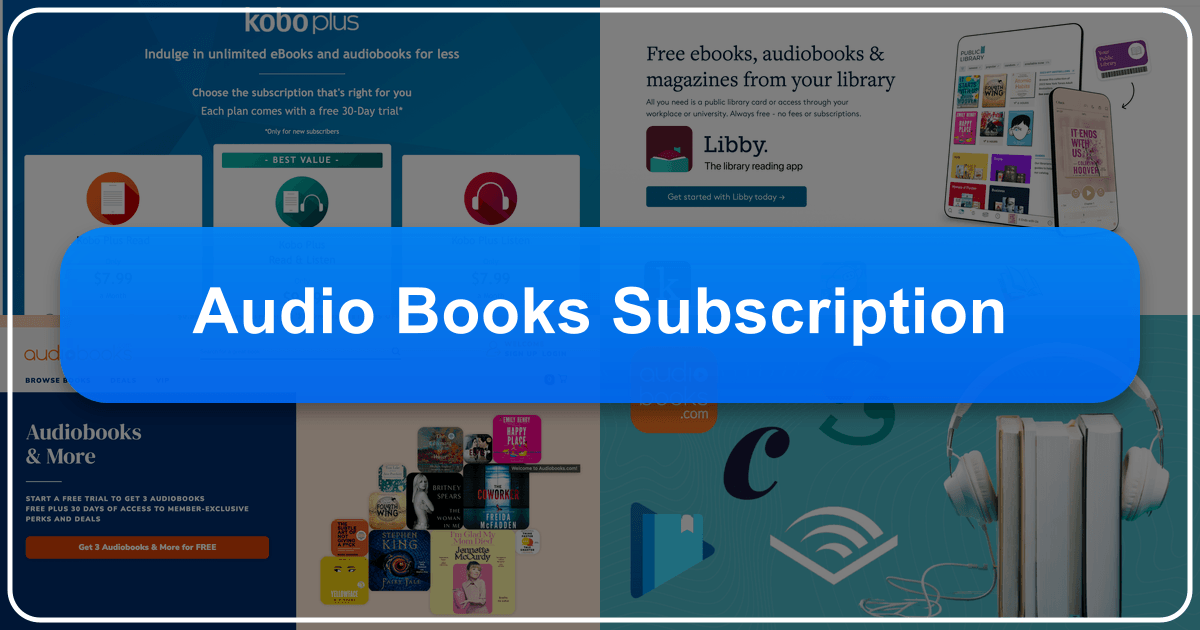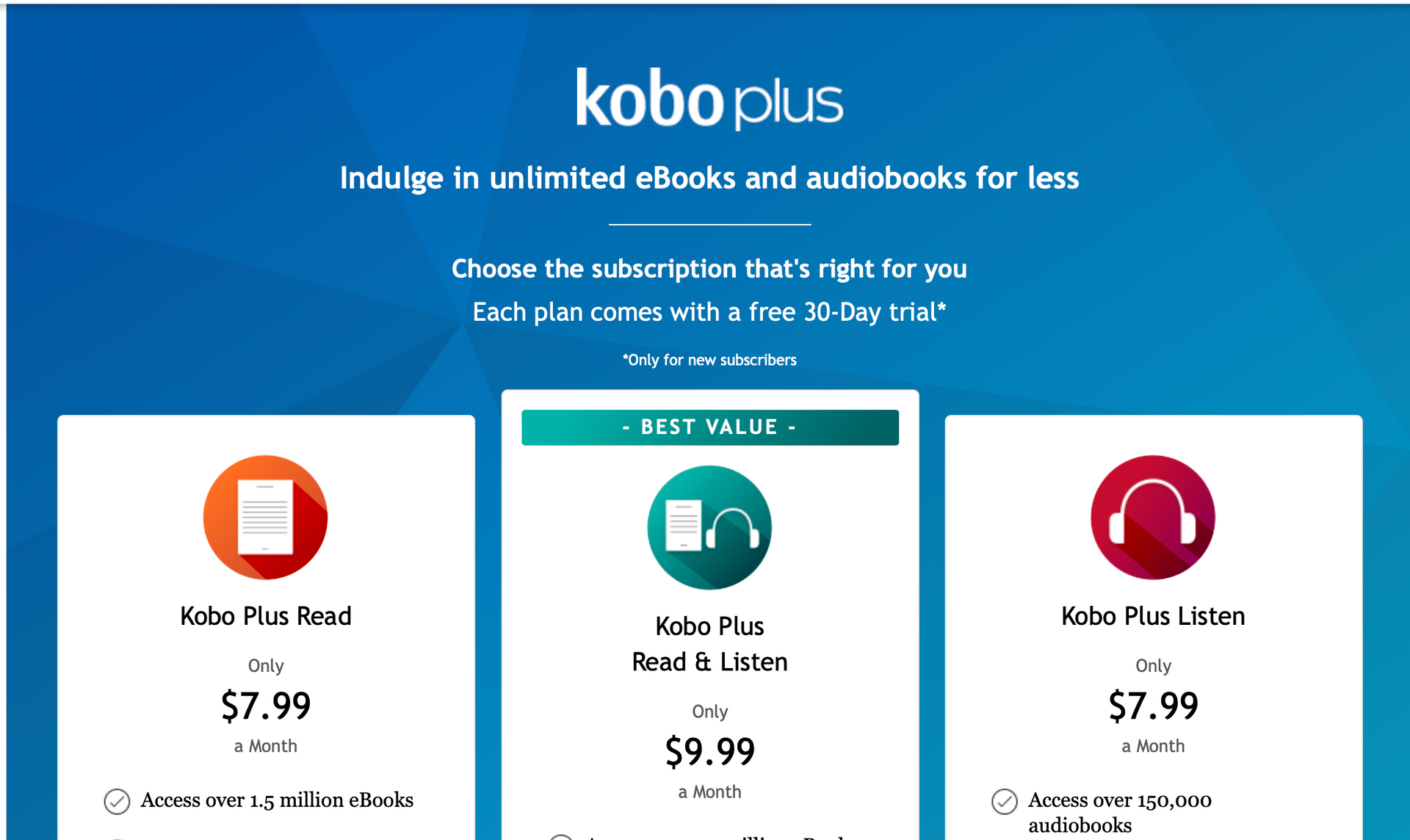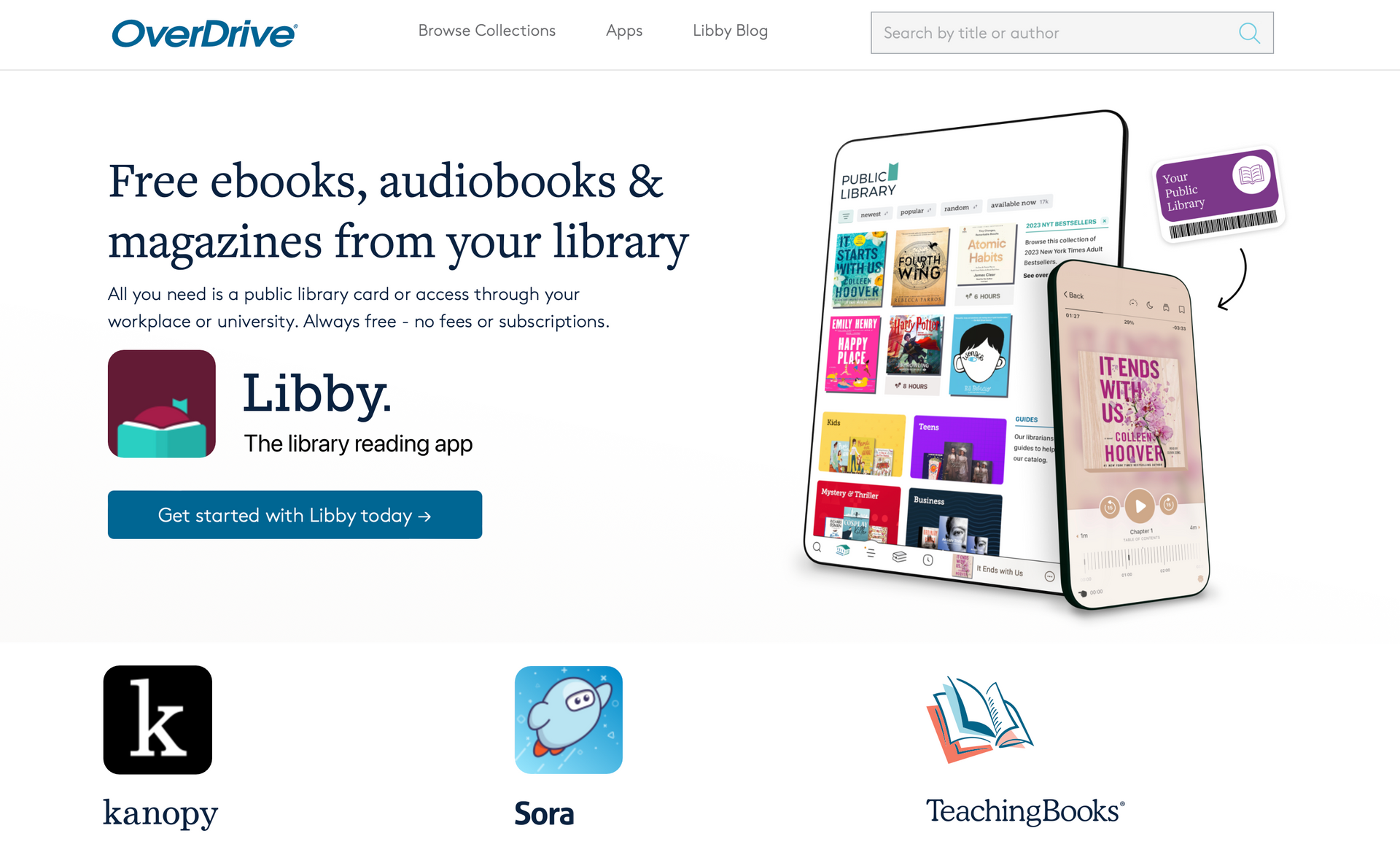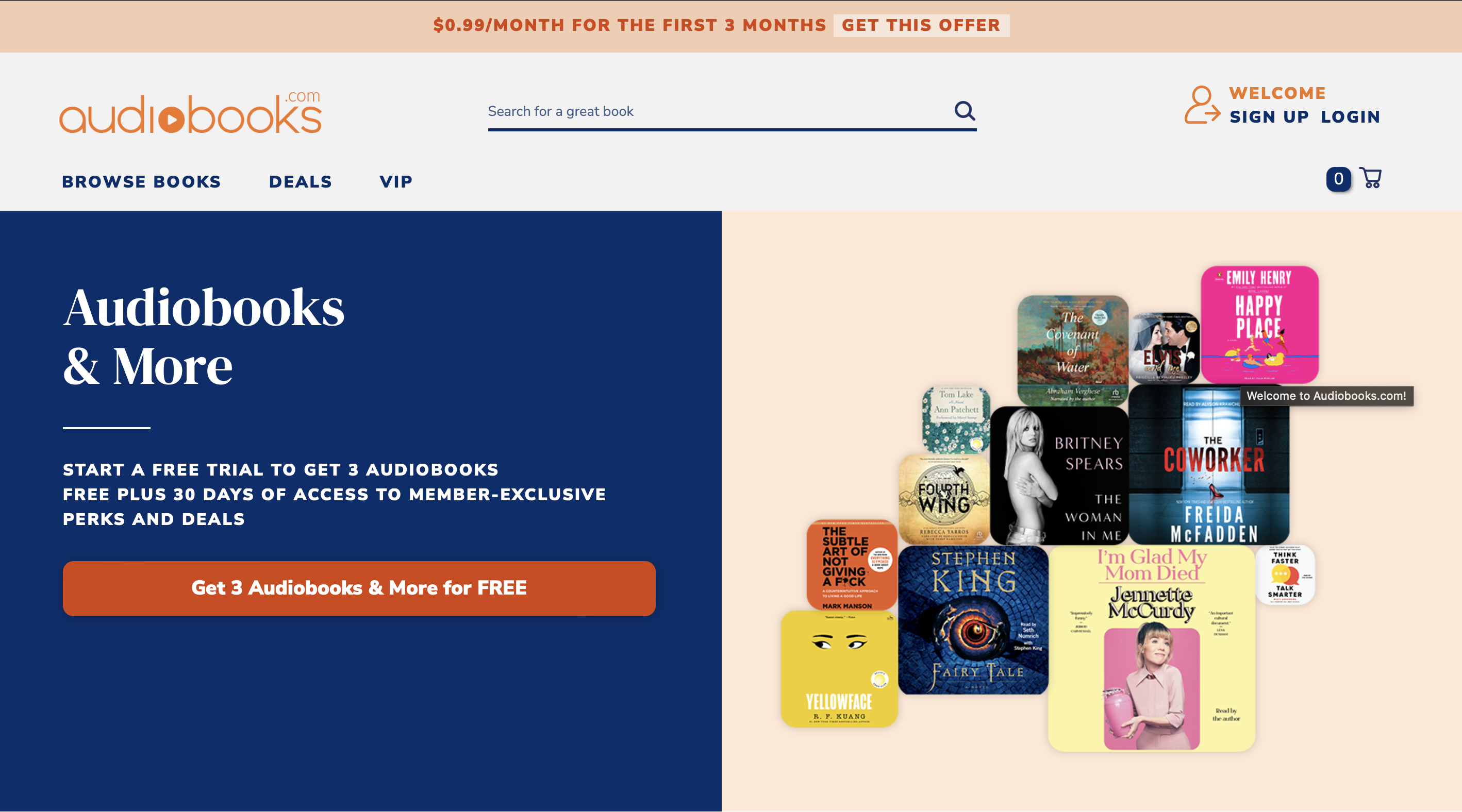Audiobook Subscription Services: A Comprehensive Guide for Readers, Authors, and Publishers

Audiobook memberships have revolutionized access to literature, seamlessly integrating into the busy lives of modern listeners. This guide explores the landscape of audiobook subscription services, examining their benefits for readers, authors, and publishers alike. We’ll delve into the features, pricing, and catalogs of leading platforms, helping you choose the service best suited to your needs.
Understanding the Audiobook Subscription Market
The audiobook market is booming, offering a convenient and engaging way to consume stories. These services cater to a diverse audience, from commuters and fitness enthusiasts to students and casual listeners. However, the market is not homogenous; different platforms offer distinct approaches to content delivery, pricing, and user experience. This diversity presents both opportunities and challenges for readers and creators.
The Reader’s Perspective: Choosing the Right Service
For readers, the primary considerations when selecting an audiobook subscription revolve around content availability, pricing, user experience, and device compatibility. The vast array of services available can be overwhelming; a detailed analysis of key offerings is crucial for an informed decision.

Content and Catalog Size:
While many services boast vast libraries of audiobooks, exceeding hundreds of thousands or even millions of titles, the actual selection varies significantly. Some services excel in specific genres or age demographics, while others prioritize breadth over depth. Readers should carefully examine the catalog before committing to a subscription to ensure their preferred authors and genres are well-represented. The availability of bestsellers and new releases also fluctuates between platforms.

Pricing and Subscription Models:
Audiobook subscription models range from credit-based systems, where subscribers receive a fixed number of credits per month to purchase individual titles, to unlimited streaming services, allowing access to a library of titles without restrictions (though often with hidden limitations on the number of books you can access each month). Credit-based systems offer flexibility and ownership of purchased audiobooks but can become expensive for frequent listeners. Unlimited streaming options provide better value for voracious readers but often come with limitations such as restricted access to certain books or after exceeding a certain listening threshold. Pricing also varies greatly between services.

App Functionality and User Experience:
User experience is paramount. A well-designed app should be intuitive, user-friendly, and offer features that enhance the listening experience. Essential features to consider include adjustable playback speed, bookmarking capabilities, sleep timers, offline listening options, and personalized recommendations.
Device Compatibility:
Compatibility with various devices is another crucial aspect. Most major platforms offer apps for Android, iOS, Windows, and macOS, but support for other devices, such as Kindles, varies. Some platforms offer DRM-free downloads, allowing users to listen to their audiobooks on any device, while others restrict playback to the platform’s app.
The Creator’s Perspective: Reaching a Wider Audience
For authors and publishers, audiobook subscription services represent a crucial distribution channel for reaching a potentially massive audience. However, understanding the nuances of different platforms is crucial for maximizing revenue and exposure.
Royalty Rates and Revenue Models:
Royalty rates vary significantly across platforms, affecting an author’s earnings. Some services offer higher royalty percentages but may have smaller user bases, while others might have larger audiences but lower royalty rates. Authors should carefully analyze the balance between potential reach and revenue generation when selecting platforms.
Distribution Strategies:
Authors and publishers can distribute their audiobooks directly to individual platforms or utilize aggregators like PublishDrive for simultaneous distribution across multiple services. Aggregators streamline the publishing process and broaden reach but may entail subscription fees.
Marketing and Promotion:
Effective marketing and promotion are crucial for audiobook success. Authors should leverage the promotional tools and features offered by different platforms to gain visibility and attract listeners. Understanding each platform’s audience and marketing channels can significantly impact the book’s success.
A Review of Leading Audiobook Subscription Services
The following section provides a detailed overview of several prominent audiobook subscription services, highlighting their strengths and weaknesses:
1. Audible
Audible, owned by Amazon, stands as one of the most recognized names in the audiobook industry. Its expansive library, comprising over 200,000 titles, includes numerous exclusive Audible Originals, podcasts, and bestsellers. Audible operates on a credit-based model, where subscribers purchase audiobooks using credits earned monthly. Subscribers can maintain ownership of purchased audiobooks even after canceling their subscriptions.
Strengths: Extensive library, high-quality narration, ownership of purchased titles. Weaknesses: Credit-based model can be costly, not all bestsellers are included.
2. Kobo Plus
Kobo Plus provides an alternative approach with a broader selection of ebooks and audiobooks. Kobo’s focus is on providing a large library of content across multiple devices. With a model similar to Audible Plus, readers enjoy the ability to listen to an unlimited amount of content from the app’s library, without purchasing individual credits for every book.
Strengths: Unlimited access to a large library, strong integration across devices. Weaknesses: Fewer new releases and bestsellers compared to other options.
3. Scribd (Now Everand)
Everand (formerly Scribd) presents itself as a “Netflix for reading,” offering unlimited access to a vast collection of audiobooks, ebooks, magazines, and sheet music. Its all-you-can-listen model appeals to readers who consume substantial amounts of content monthly.
Strengths: Unlimited access to a large variety of content, including audiobooks, ebooks, and other media types. Weaknesses: Can have hidden listening limitations; the quality of some content may vary.
4. Storytel
Storytel offers a substantial collection of over 400,000 audiobooks, including a significant number of international titles. Its monthly subscription provides unlimited listening access, offering a value proposition to frequent audiobook consumers. Storytel boasts offline listening features, personalized recommendations, and seamless switching between ebook and audiobook versions.
Strengths: Large selection of international titles, offline listening, personalized recommendations. Weaknesses: Pricing can vary depending on region.
5. OverDrive Listen
OverDrive Listen distinguishes itself as a free audiobook service, powered by library cards from participating libraries. Subscribers use their library card for access to a library of titles. This free option provides access to a selection of books but may involve wait times and limited availability due to the finite number of digital copies.
Strengths: Completely free for library members. Weaknesses: Limited availability of books depending on the library’s collection.
6. Other Notable Services
Several other platforms offer noteworthy features. Libro.fm supports local bookstores and provides DRM-free audiobooks; Spotify Premium integrates audiobooks into its music and podcast service, although access is limited by listening hours. These options may appeal to niche audiences or readers seeking specific features.
Conclusion: Selecting the Best Audiobook Subscription
The optimal audiobook subscription service depends heavily on individual needs and preferences. Consider the following factors:
- Reading/Listening Habits: Casual listeners may find credit-based systems sufficient, while voracious consumers might prefer unlimited streaming.
- Content Preferences: Choose a service that reflects your preferred genres and authors.
- Device Compatibility: Ensure the platform supports your preferred devices.
- Budget: Compare pricing and value propositions.
By thoroughly examining your reading/listening habits, budget constraints, and technical requirements, you can make an informed decision and select the audiobook subscription that enhances your literary journey. The options presented provide a starting point for your exploration; further research may unveil even more suitable alternatives.